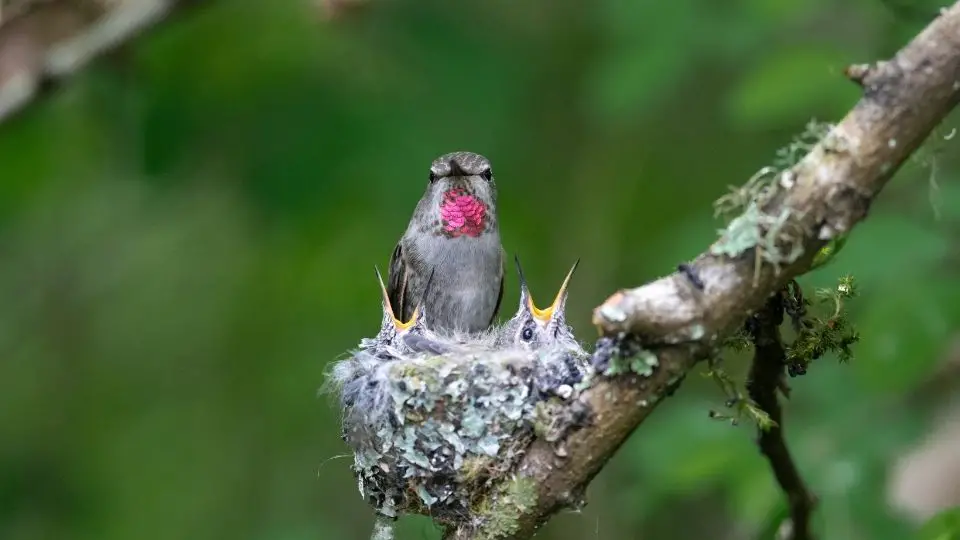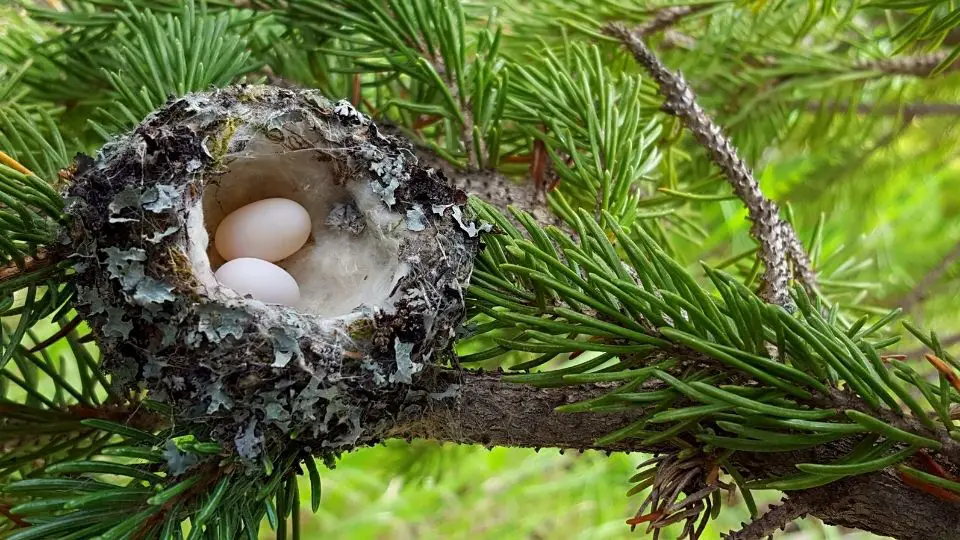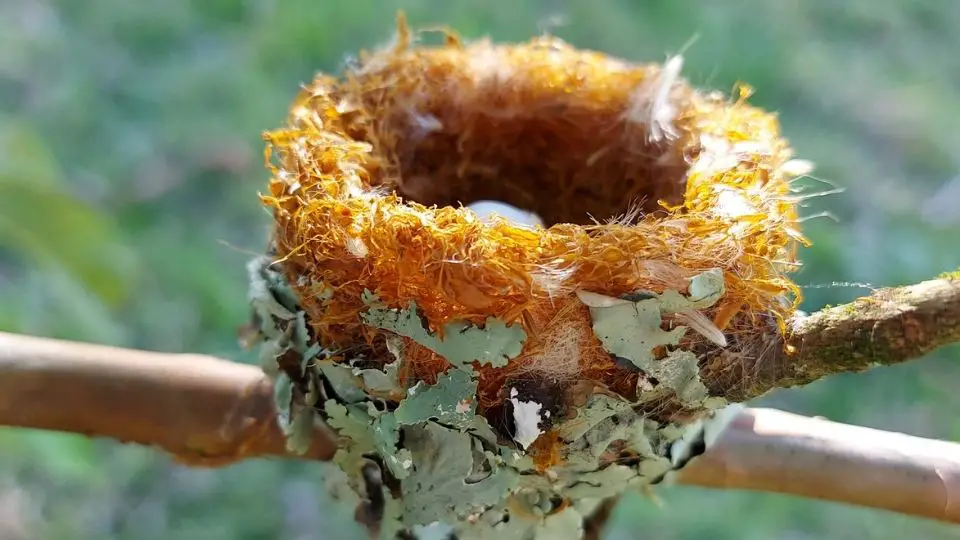Hummingbirds do not use nest boxes or birdhouses that humans make to nest. The best way to find a hummingbird nest is to follow a female hummingbird back to her nesting site by attracting the hummingbird first. The only way to attract a hummingbird is through ahummingbird feeder (you can find some cheap ones on Amazon if you don't want to build your own).
In the United States, hummingbird nests are hard to find. It’s not uncommon to never see a hummingbird nest in your backyard. The females usually do a great job hiding them from view because they’re good at camouflaging.
However, there are many times when these avian beauties can be seen looking for food, visiting flowers and plants, or even coming and going from their nesting sites. Keep your eyes peeled when walking outside; you may be able to find a hummingbird nest! North America has a lot of hummingbirds, the most common ones being Anna’s hummingbird, Costa’s hummingbird, Rufous hummingbird, Ruby-throated hummingbird, Allen’s hummingbird, and Black-chinned hummingbirds.
Other species can also be seen on the West Coast, Arizona, or California. Hummingbirds breed starting in March. But when the weather is cold, it can start as late as July. Anna’s Hummingbirds can even begin nesting in December.

Table of Contents
How to find a Hummingbird nest
You can find them typically in trees or shrubs, usually above the ground. But sometimes, the location is not so prominent. Hummingbird nests are extremely tiny nests (the size of a ping-pong ball), so it’s easy to miss them. Never mind that they’re also usually camouflaged. The moss and the lichens cover up the nest pretty well, making it hard to find for other animals or people.
They love most the taste of some sweet sugary nectar! You can make your own nectar (combining water with sugar) or plant flowers that attract them (through flavor, shape, and color) like honeysuckle. Start practicing bird watching! To find a nest, the best thing to do is observe and follow a female hummingbird.
Why? Well, mother hummingbird only scarcely leave their nests to look for food sources. Once they’re done, they return home. So if you spot one, be sure to follow them. Observing and analyzing their behavior gives you a great chance of finding their nest.

Should you touch a Hummingbird’s nest?
As with other birds’ nests, touching is out of the question! That’s because when you touch or interact with a bird’s nest, the risk of them leaving it (and their baby birds) is huge. If you want to see it from up close, use other means – binoculars, zoom cameras, and telephoto lenses (for photographing) come to mind.
How do Hummingbirds build their nests?
As a base, Hummingbirds use tree branches, twigs, pieces of bark, leaves, and different plant fibers. To that, they add moss and lichen to make the nests cozier. The final perfect touch is the spider silk (taken from spider webs) they use to put it all together. This spider silk works like a glue that keeps everything in place once finished.
The whole process of nest construction can take a while – from a few days to a week. Unlike other birds’ nests, hummingbirds know how to make them more comfortable and soft, making them the perfect nesting site to lay eggs. Some of the more unusual nesting materials they can use (apart from moss and lichen) are cotton fibers, seed pos fluff, feathers, dandelion, thistle, and other soft textures.
Trees that provide these soft materials can be of help: cottonwood, witch hazel, willow, elm, maple, and others. Some species have started to adapt to building their nests in more urban areas and spots like clotheslines, knots, wires, and electric light (Rufous hummingbirds).

Nests according to species of Hummingbirds
Different bird species build nests differently. Here are some key distinctions:
- Anna’s hummingbirds can start nesting in December (usually, it’s February to May for other hummingbirds).
- Black-chinned hummingbirds have very tall nests.
- The Rufous Hummingbird nests from April to July, and it typically is more aggressive when defending its nest.
- Ruby-throated hummingbird females can take care of two nests at once.
- Broad-Tailed Hummingbirds go back to the same nesting spot repeatedly.
- Magnificent hummingbirds build huge nests that are placed high up.

Nesting, hatching, and fledging in Hummingbirds
After the breeding season, the female hummingbird is left to take care of everything (without the help of the male hummingbird):
- The nest building
- Laying the eggs
- Incubation
- Taking care of the baby hummingbirds
After building the nest, mother hummingbirds lay two jellybean-sized eggs and sit on them for a couple of weeks, only leaving them when foraging. Hummingbird eggs are easy to miss because of their size (the smallest bird egg, after all), and they look just like miniature versions of regular eggs.
After the eggs crack, the hatchlings depend entirely on their mother to provide the food and the warmth they need. Baby hummingbirds leave their nest relatively soon after this process – after fledglings grow a bit and are not tiny hummingbirds anymore, they don’t tend to stick around. Instead, they willingly leave on their own.
After leaving, the mother lays another set of eggs and takes care of the new nestlings. Some hummingbird species can lay eggs two times in the same breeding season. Finally, each nesting requires the building of a new nest.

